Travel
Take a Break : Your Guide to the hills of Northeast
FWD’s travel for the month of June 2015, Ronnie Kuriakose explores the green hills of Northeast
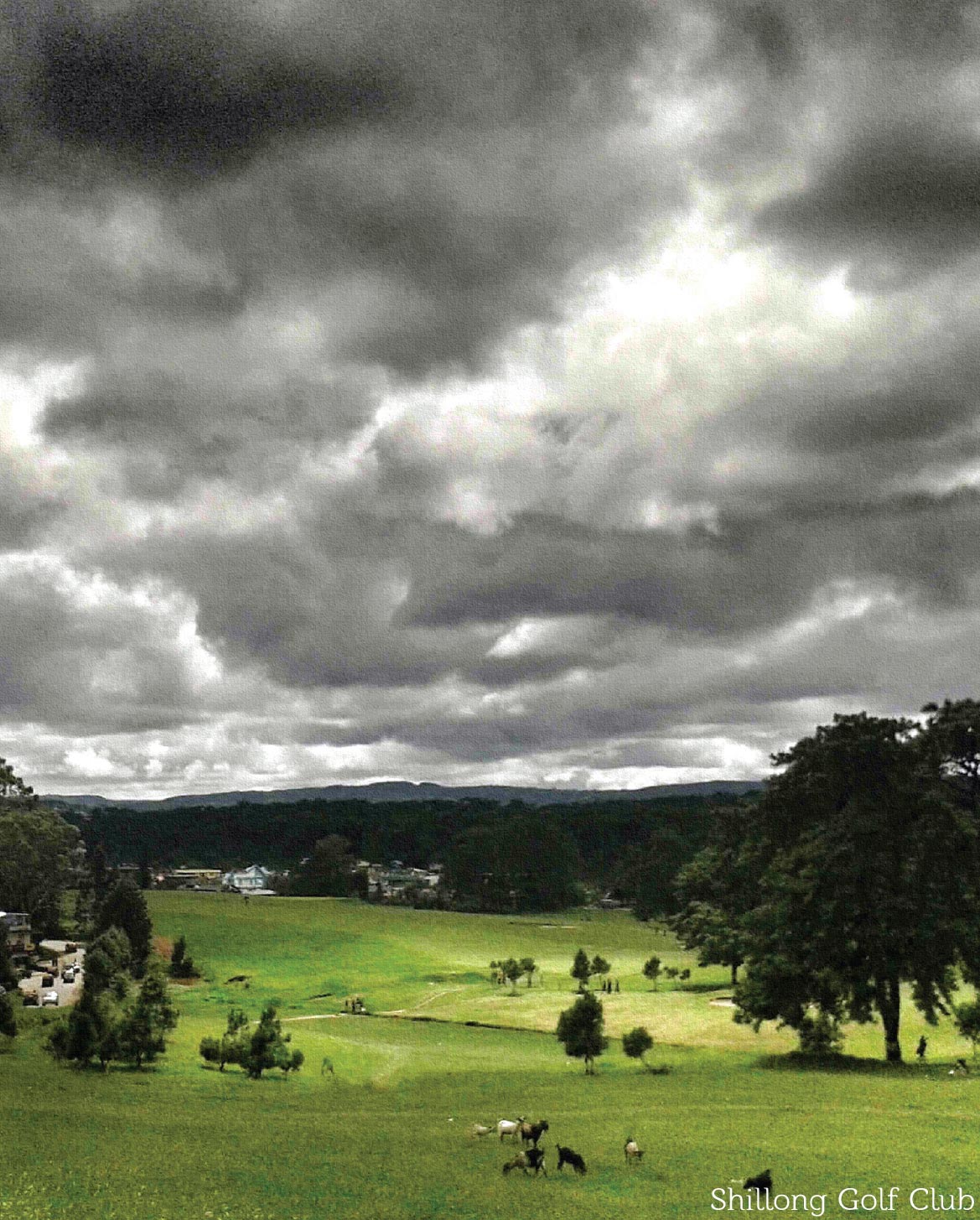
It was yet another scorching day in Delhi with the mercury rising past the figures that the weathermen had predicted. I had a spring in my step as I danced my way to the airport. I was headed for the quaint hills, the ageless forests, and the formidable ranges of India’s far corner, a region of rugged beauty, a weaving of cultures, climates, landscapes, and people – the North East. It was not a quest to seek inner peace atop Himalayan peaks watching glaciers melt into rivers that would soon find its way across Assam’s floodplains, nor was it a pilgrimage, to move mountains in the hopes of finding Tawang.On reaching Guwahati airport at ten on 24th April, I, having already decided on the flight that I am only going to explore Guwahati city on my last day here, proceeded to make arrangements for a straight journey to Shillong. I walked around, in and out of the many souvenir and travel stalls installed at the airport, waiting for the bus that would take to Guwahati. There, on reaching Paltan Bazar, I got on a sumo for a reasonable 170rps to Shillong, passing the Umiam Lake on the way and the Space Exploration Centre.
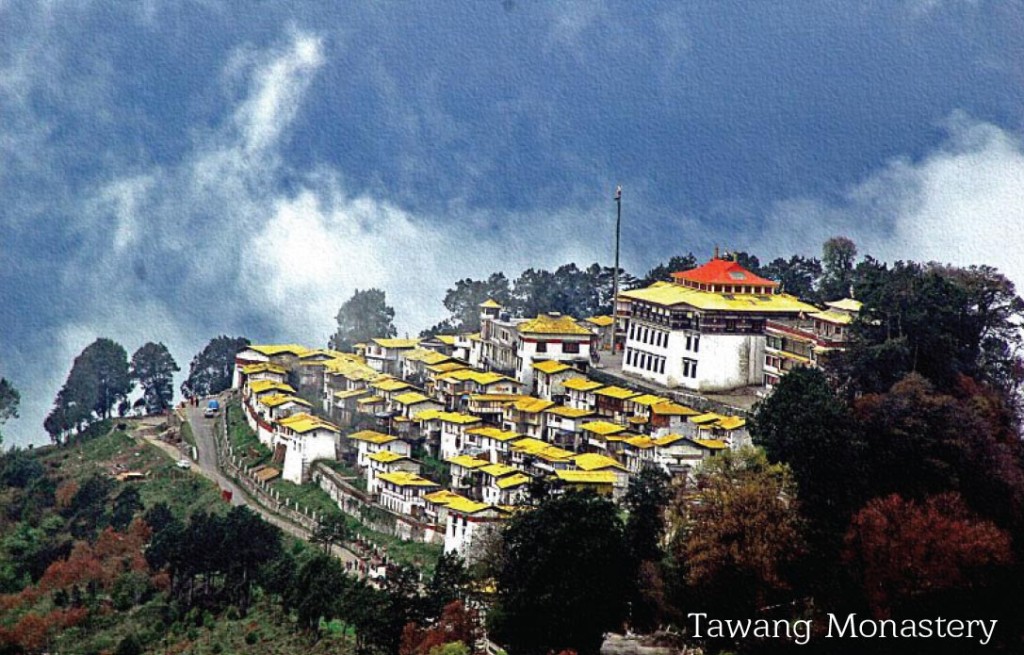
On reaching Shillong, I roamed around for a bit trying to find a good place to stay. Apparently, Police Bazaar is a good place to stay and right at the heart of Shillong from where you can get to any of the nearby places in ease. I stayed at Earle Holiday Home for a moderate 600rps a night for a hut. It was comfy. The service was brilliant, and I would recommend anyone going to the North East to stay here. I met some local lads who agreed to show me around for a cup of coffee. They took me, obviously, to a coffee shop – Café Shillong. But it proved to be a lot more than that. For the people there, it was a haven for pop-culture, sports, and music. We talked for hours. Coffee soon gave way to dinner and thoughtful conversations, as a storm brewed outside.It was drizzling when I first woke up on the 25th. The windows were laden with mist obscuring vision. Rain pattered steadily against it and on the roof. It was cold outside, but under the blankets I found warmth and the need to sleep again. It was not until after one that I woke up. It was still rainingand this time, a lot too loudly with occasional bursts of thunder.It was then that it dawned on me that I had forgotten to bring along my raincoat. I thus had to stay indoors until 3 watching the news as details of the Nepal earthquake poured in.At 4pm, I knew that I had stayed indoors long enough. I decided to head out for a bit, to stretch my legs, and hopefully, if the offices are not closed yet, gather some information. Luckily for me, the Meghalaya Tourism Office was only minutes away.
I collected several brochures and stopped at Delhi Mitra Hotel at Police Bazaar to inspect them more closely. Their must-have Cholee Bature however, prevented that from happening. The food was 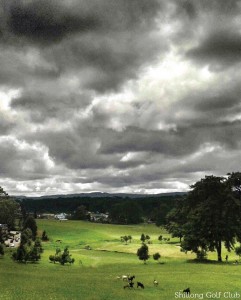 delicious, as all warm food is when the weather is this cold.I roamed around the market until well late into the evening, pointing at things and asking for its name. The winding roads soon took me to Don Bosco Square, and I found myself standing outside Café Shillong. I walked in to try one of their highly rated pork burgers and ended the meal with a thick slice of walnut cake and coffee. The manager, whose name I later learned, Dahun, sat down next to me – a solo-traveler clearly in distress. He helped me get some of the details right, and then later we sat talking about topics ranging from football, astronomy, and adventure. It was already very dark around 9 and there were not too many people on the road as I walked back to my hut. Shillong sleeps early, but I stayed awake for a bit longer trying to work out the logistics for the remainder of my days here, keeping a good eye on the news. On 26th, I woke up to the songs of the summer bird and found that the sun was not up yet. Far ahead in the distance, however, I could see the golden crown emerging from between the peaks where it had since yesterday nestled to sleep. I took a long walk again and found myself outside the city, in the great open lands. I strolled through goat trails that ran up the cliffs, crossed small streams that divided villages, and along fields that seemed to stretch to the far ends of the horizon.And it seemed right then to have a church there, at the end of the lane, where land and sky met. It was where I had planned to meet The Pariats. They introduced me to a couple of their friends, and together we attended an early service, singing songs in unison. There was no element of religion in it, but for a foreigner to the region, there was a lot of culture and utopian societal values to be observed here.After a gloriously satisfying morning, I made my way to Ward’s Lake where I paid a reasonable 60rps for an hour of boating. I had thoughtfully bought a newspaper along the way to read, andI did just that while peddling around in circles, annoying the many swans that made a home here. An hour passed fairly quickly, and I found myself walking up the hill to wash away any girth of humility and modesty that the church service had instilled in me. Engaging in a game of golf and rubbing shoulders with Shillong’s rich and powerful, clenching hard cigarettes and gulping down crude coffee.
delicious, as all warm food is when the weather is this cold.I roamed around the market until well late into the evening, pointing at things and asking for its name. The winding roads soon took me to Don Bosco Square, and I found myself standing outside Café Shillong. I walked in to try one of their highly rated pork burgers and ended the meal with a thick slice of walnut cake and coffee. The manager, whose name I later learned, Dahun, sat down next to me – a solo-traveler clearly in distress. He helped me get some of the details right, and then later we sat talking about topics ranging from football, astronomy, and adventure. It was already very dark around 9 and there were not too many people on the road as I walked back to my hut. Shillong sleeps early, but I stayed awake for a bit longer trying to work out the logistics for the remainder of my days here, keeping a good eye on the news. On 26th, I woke up to the songs of the summer bird and found that the sun was not up yet. Far ahead in the distance, however, I could see the golden crown emerging from between the peaks where it had since yesterday nestled to sleep. I took a long walk again and found myself outside the city, in the great open lands. I strolled through goat trails that ran up the cliffs, crossed small streams that divided villages, and along fields that seemed to stretch to the far ends of the horizon.And it seemed right then to have a church there, at the end of the lane, where land and sky met. It was where I had planned to meet The Pariats. They introduced me to a couple of their friends, and together we attended an early service, singing songs in unison. There was no element of religion in it, but for a foreigner to the region, there was a lot of culture and utopian societal values to be observed here.After a gloriously satisfying morning, I made my way to Ward’s Lake where I paid a reasonable 60rps for an hour of boating. I had thoughtfully bought a newspaper along the way to read, andI did just that while peddling around in circles, annoying the many swans that made a home here. An hour passed fairly quickly, and I found myself walking up the hill to wash away any girth of humility and modesty that the church service had instilled in me. Engaging in a game of golf and rubbing shoulders with Shillong’s rich and powerful, clenching hard cigarettes and gulping down crude coffee.
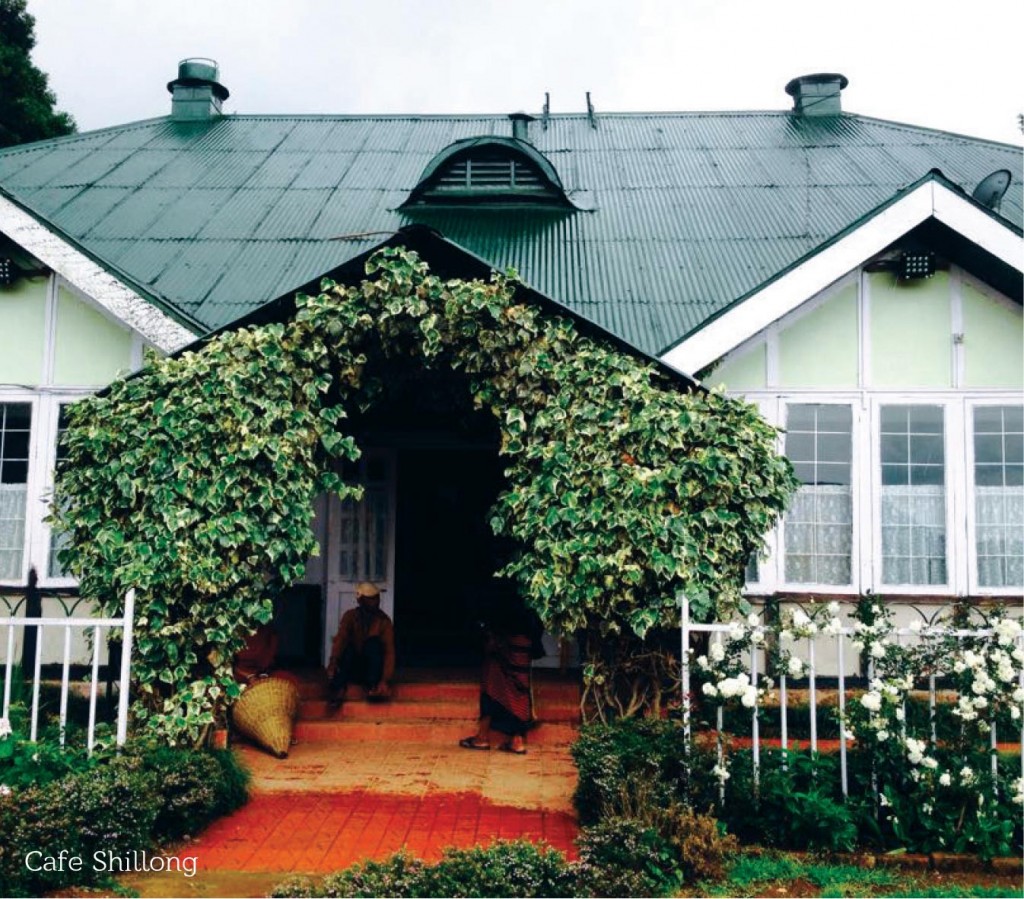
Noni, the manager of Shillong Golf Club, is a stark contrast to the men that frequent the place with his calm, friendly demeanor. When the rain stoppedplay and any hopes of me getting myself known to the big shots here. I thanked him for his generosity and strolled back into the club where a plate of pork chops awaited me.On one of the brochures that I picked up the other day, I had learned that Meghalaya Tourism Board arranges Adventure Tours around Shillong every Monday and I, having already paid for it online for the tour on the 27th, hurried there just in time to board the bus.It left at 8 and headed straight for Mawkdok Valley View Point, where I did a bit of zip-lining. It was totally worth the high price. We then headed to Eco Park where several streams converged until the end of the cliff and suddenly disappear underneath a layer of rocks. It is rightly called the Missing Waterfalls. There, atop the cliff, I saw the vast plains of Bangladesh. Next we headed to Maw-Sami Stalactites Cave. We were advised to not stay close as it gets very hard to breathe due to the lack of oxygen there. Seven Sisters waterfall was the next, majestic attraction that we went to, followed by Mot Trop Rock, considered by the locals to have formed around an evil giant’s basket. As it fell after the giant was killed by the people thereby getting him to eat a meal with nails and broken glass pieces. Thang Kha Rang Park was the next stop. It was also a fort built by the British as a vantage point for their operations here. We then headed to Cherrapunjee, where we spent the rest of our day, not before stopping at Ramkrishna Mission Museum for high tea. We came back rather late, and I had neither time nor energy to do anything, but fall asleep and that’s just what I did.
The next day, I boarded a bus back to Guwahati, not all the way but till Parowa Intersection, which is 10kms away from the city, from where I boarded a traveler to Tezpur. I reached Tezpur 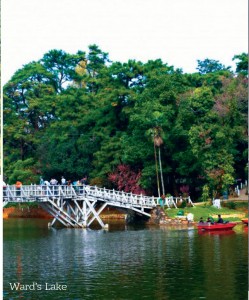 University where my friend had arranged accommodation for me. It was gloriously huge university, boasting of well-maintained gardens and infrastructure. I had only planned for a night’s stay here, but on learning that the university was having their cultural programs tomorrow, I booked for another night, and it was totally worth it. I had a chance to explore the museums inside the campus, make use of the sports facilities and even meet a few professors to indulge in insightful conversations on the culture here. I made my way to attend a short screening of the documentary, Mists of Maijlu followed by a Colloquim on Bihu – the Spring Festival of Assam. It was a delightful experience.I woke up early the next day and made my way further up north to Tawang. We drove around roads that snaked it way up mountains and along meadows atop cliffs until we reached the foothills of a mountain. Atop it I found, beneath layers of mist, the spires that made Tawang Monastery. It was a splendid sight. I stayed at the PWD Guest House courtesy of the office I met during my stay at Shillong. I slept that night to the sweet music of the cold winds as it brushed against slender pines. It was very peaceful, and the world that I knew seemed so very far away.The next morning, I availed the chopper service to get down to Guwahati quickly and roamed around the old town until it was time to board my flight. I travelled for travel’s sake, and it was worth it, inspiring me to travel for travel’s true purpose in the months to come.
University where my friend had arranged accommodation for me. It was gloriously huge university, boasting of well-maintained gardens and infrastructure. I had only planned for a night’s stay here, but on learning that the university was having their cultural programs tomorrow, I booked for another night, and it was totally worth it. I had a chance to explore the museums inside the campus, make use of the sports facilities and even meet a few professors to indulge in insightful conversations on the culture here. I made my way to attend a short screening of the documentary, Mists of Maijlu followed by a Colloquim on Bihu – the Spring Festival of Assam. It was a delightful experience.I woke up early the next day and made my way further up north to Tawang. We drove around roads that snaked it way up mountains and along meadows atop cliffs until we reached the foothills of a mountain. Atop it I found, beneath layers of mist, the spires that made Tawang Monastery. It was a splendid sight. I stayed at the PWD Guest House courtesy of the office I met during my stay at Shillong. I slept that night to the sweet music of the cold winds as it brushed against slender pines. It was very peaceful, and the world that I knew seemed so very far away.The next morning, I availed the chopper service to get down to Guwahati quickly and roamed around the old town until it was time to board my flight. I travelled for travel’s sake, and it was worth it, inspiring me to travel for travel’s true purpose in the months to come.
Travel
Essential Summer Travel Bag Must-Haves

As the summer sun beckons, it’s time to dust off your travel bags and embark on exciting adventures. Whether you’re jetting off to exotic destinations or exploring hidden gems closer to home, packing the right essentials can make all the difference in ensuring a hassle-free and enjoyable journey. Join me as we explore the must-have items to pack in your travel bags for a memorable summer getaway.
Sun Protection Essentials:

Beat the heat and safeguard your skin from harmful UV rays with sun protection essentials. Don’t forget to pack sunscreen with a high SPF, sunglasses to shield your eyes, and a wide-brimmed hat for added protection. Additionally, lip balm with SPF and aloe vera gel can provide relief from sunburns and keep your lips hydrated.
Lightweight Clothing Options:

Embrace the spirit of summer with lightweight and breathable clothing options that keep you cool and comfortable on your travels. Pack versatile pieces such as cotton shirts, shorts, flowy dresses, and swimsuits for beach outings. Opt for wrinkle-resistant fabrics to minimize the need for ironing and save space in your luggage.
Hydration Essentials:

Stay hydrated on the go by packing a reusable water bottle in your travel bag. Fill it up whenever you have access to clean drinking water to quench your thirst and reduce plastic waste. Consider packing electrolyte packets or tablets to replenish lost minerals during outdoor activities or hot weather.
Travel-Friendly Toiletries:
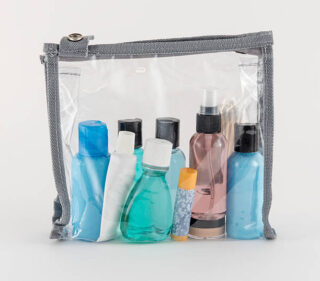
Travel toiletries in clear plastic, quart-sized bag on white background
Streamline your toiletry bag with travel-sized essentials that meet TSA regulations and save space in your luggage. Pack items such as shampoo, conditioner, body wash, toothpaste, and moisturizer in leak-proof containers. Don’t forget to include a compact travel towel and wet wipes for quick refreshment on the go.
Tech Gadgets and Accessories:

Capture unforgettable moments and stay connected with essential tech gadgets and accessories. Pack your smartphone, camera, or GoPro along with chargers, power banks, and adapters for international travel. Consider investing in a lightweight and portable Bluetooth speaker for impromptu beach parties or outdoor picnics.
First Aid Kit and Medications:

Home first aid kit on a blue background. The elements of the first aid kit are laid out on the table.
Be prepared for minor emergencies and health-related issues by packing a well-stocked first aid kit in your travel bag. Include items such as adhesive bandages, antiseptic wipes, pain relievers, antihistamines, and motion sickness tablets. Don’t forget to pack any prescription medications you may need during your trip.
With these essential items packed in your travel bag, you’re ready to embark on a summer adventure filled with unforgettable experiences and cherished memories. From sun protection essentials to tech gadgets and first aid supplies, being prepared for every situation ensures a smooth and enjoyable journey wherever your travels may take you. So, grab your bags, soak up the sun, and let the summer adventures begin!
Travel
Exploring Nature’s Splendor: The Best Waterfalls to Visit in Kerala
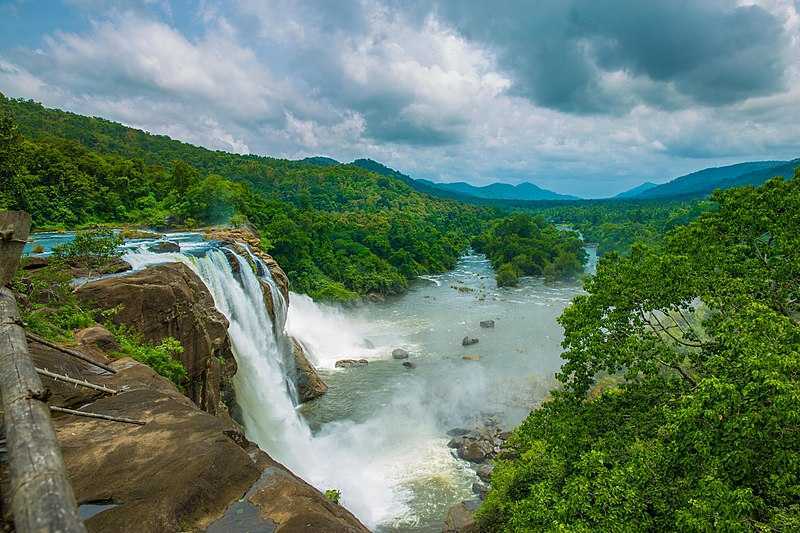
Nestled amidst lush greenery and pristine landscapes, Kerala, often referred to as “God’s Own Country,” is home to some of the most breathtaking waterfalls in India. From cascading torrents of water to serene natural pools, these majestic falls offer a refreshing escape into the heart of nature’s splendor. Join me as we journey through the best waterfalls to visit in Kerala, each offering its own unique charm and allure.
Athirappilly Waterfalls:
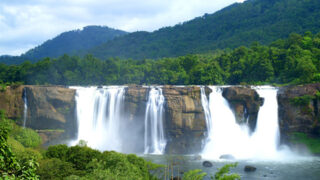
Located in the Thrissur district, Athirappilly Waterfalls is often dubbed as the “Niagara of India” for its impressive cascade and grandeur. Surrounded by dense tropical forests, the waterfall plunges from a height of approximately 80 feet, creating a mesmerizing spectacle of mist and spray. Visitors can enjoy scenic viewpoints, nature trails, and boat rides to witness the beauty of Athirappilly up close.
Meenmutty Waterfalls:
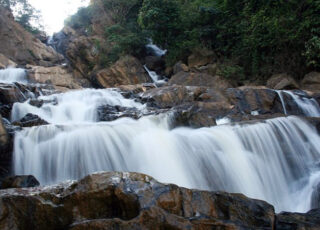
Tucked away in the Wayanad district, Meenmutty Waterfalls is a hidden gem nestled amidst the Western Ghats. With a three-tiered cascade plunging from a height of over 800 feet, Meenmutty is one of the tallest waterfalls in Kerala. Accessible via a trek through dense forests and rocky terrain, the journey to Meenmutty is as thrilling as the destination itself, offering panoramic views of the surrounding landscape.
Vazhachal Waterfalls:
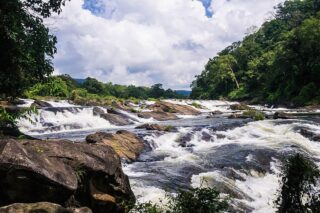
Just a stone’s throw away from Athirappilly, Vazhachal Waterfalls offers another enchanting spectacle of cascading waters amidst lush greenery. Fed by the Chalakudy River, Vazhachal descends gracefully over rocky terrain, creating a picturesque setting for nature enthusiasts and photographers alike. Visitors can explore nearby attractions such as the Vazhachal Forest Gardens and take a dip in the cool, refreshing waters.
Palaruvi Waterfalls:
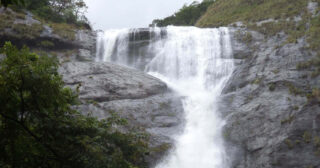
The name Palaruvi means “stream of milk” in Malayalam, and when you visit the falls, you’ll understand why. To get there, you’ll need to hike through the forest. There’s a tiny spot where you can swim and take in the cascade. You can combine a visit to the Shenduruny Wildlife Sanctuary with a tour to this idyllic setting. It is regarded as one of Kerala’s top waterfalls and is sure to add magic to your vacation.
Chethalayam Waterfalls:
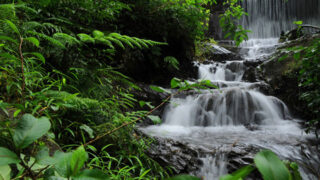
One of Kerala’s most well-known waterfalls, particularly for hikers and adventure seekers, is Chethalayam. To reach this picturesque waterfall from Kidangand, you would need to hike for around 4 km. Trekkers still favour it even though it dries out in the summer.
Soochipara Waterfalls:
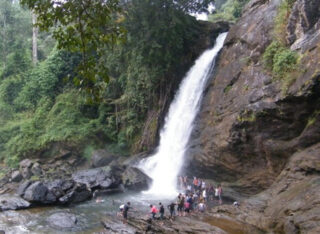
Situated near the town of Kalpetta in Wayanad, Soochipara Waterfalls, also known as Sentinel Rock Waterfalls, is renowned for its natural beauty and serene surroundings. Cascading down from a height of around 200 feet, the waterfall is nestled amidst dense forests and rocky cliffs, making it an ideal spot for trekking, rappelling, and swimming in the natural rock pools below.
Thusharagiri Waterfalls:
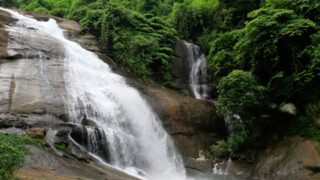
Tucked away in the Kozhikode district, Thusharagiri Waterfalls is a hidden gem waiting to be discovered by adventurous travelers. Comprising a series of cascades formed by the Chalippuzha River, Thusharagiri offers a serene retreat amidst verdant landscapes and lush greenery. Visitors can trek through the forested trails, indulge in bamboo rafting, and savor the tranquility of this off-the-beaten-path destination.
With their majestic beauty and serene surroundings, the waterfalls of Kerala offer a captivating escape into nature’s embrace. Whether you’re seeking adventure, tranquility, or simply a scenic retreat, these cascading wonders promise an unforgettable experience that will leave you enchanted and rejuvenated. So, pack your bags, lace up your boots, and embark on a journey to explore the best waterfalls Kerala has to offer.
Cover Story
Explore the Hidden Gems: Must-Visit Places on Lakshadweep
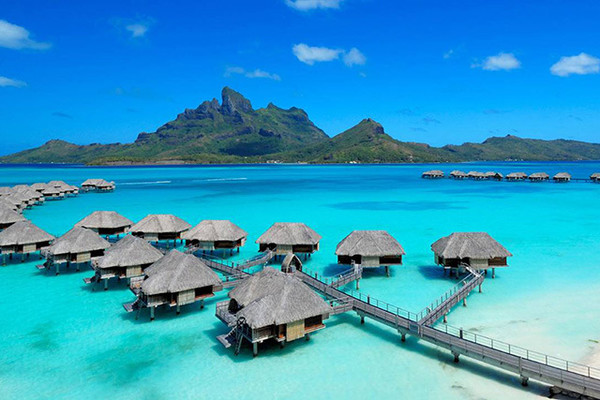
Lakshadweep, meaning “a hundred thousand islands” in Sanskrit, is a mesmerizing archipelago nestled in the Arabian Sea. With its pristine beaches, crystal-clear waters, and vibrant marine life, Lakshadweep is a paradise for travelers seeking serenity and natural beauty. Lakshadweep offers activities for all types of visitors, including nature lovers, water sports enthusiasts, and beach bums. These are the top activities to do in Lakshadweep when visiting.
The only ways to get to Lakshadweep are by air or boat. There are frequent flights from Kochi and Bangalore to the single airport, which is located on Agatti Island. Another option is to travel by ferry from Kochi, which takes between 18 to 20 hours. To enter Lakshadweep, visitors must get a special permit, which can be obtained online or through the tourism department of Lakshadweep. When the weather is nice and sunny, from October to March is the ideal time to visit Lakshadweep. Since there aren’t many resorts or guesthouses in Lakshadweep, it’s crucial to reserve your lodging well in advance.
Agatti Island:
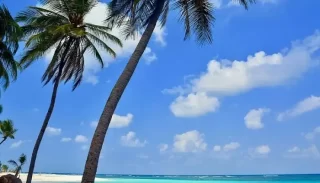
Agatti, the gateway to Lakshadweep, welcomes you with its breathtaking beauty. The island boasts stunning coral reefs, making it a haven for snorkelers and divers. Take a stroll along the shimmering white sands or indulge in water sports like kayaking and windsurfing. Don’t miss the opportunity to witness the spectacular sunset painting the sky in hues of orange and pink.
Minicoy Island:
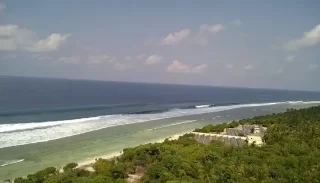
Experience the rich cultural heritage of Lakshadweep on Minicoy Island. The island is renowned for its traditional Maldivian-influenced culture, evident in its architecture, cuisine, and customs. Explore the charming villages adorned with colorful houses and visit the iconic Lighthouse built by the British. Don’t miss the chance to savor authentic Maldivian cuisine and witness captivating cultural performances.
Kadmat Island:
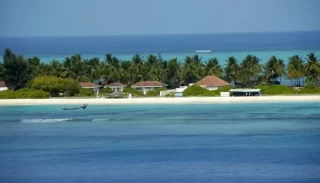
For those craving solitude and tranquility, Kadmat Island is the perfect escape. This serene island is renowned for its untouched beaches fringed with swaying palms. Dive into the azure waters to explore the vibrant marine life teeming with colorful fish and coral formations. Relax under the shade of coconut trees and savor fresh seafood delicacies served by local vendors.
Amini Beach:
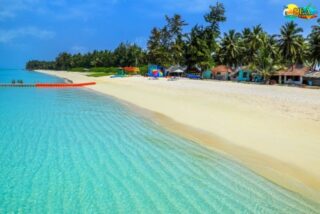
If you’re searching for quiet tourist destinations in Lakshadweep, Amini Beach is a great choice. This beach is well-known on Amini Island because of its coral sandstone surface. Adventure sports like as snorkelling, scuba diving, reef walking, and kayaking are available for you to try. Amini Beach is a great place to unwind and spend the day drinking cocktails and soaking up the sun.
Bangaram Island:
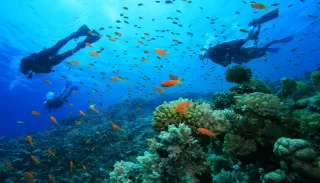
Dubbed as the jewel of Lakshadweep, Bangaram Island is a postcard-perfect destination. With its powdery white sands and emerald lagoons, it’s a paradise for beach lovers. Spend your days basking in the sun, snorkeling amidst the coral gardens, or simply unwinding in a hammock under the shade of a palm tree. Indulge in a romantic beach picnic as you watch the stars illuminate the night sky.
Lakshadweep beckons travelers with its pristine beauty, diverse marine life, and warm hospitality. Whether you’re seeking adventure, relaxation, or cultural immersion, the islands offer a myriad of experiences to cherish. Explore these must-visit places on Lakshadweep and create memories that will last a lifetime.
-

 Entertainment3 months ago
Entertainment3 months agoThe Stunning looks from Bhagya Suresh’s Wedding
-

 Fashion3 months ago
Fashion3 months agoMost Discussed Ajrakh Saree of Alia Bhatt
-

 Entertainment3 months ago
Entertainment3 months agoThe Most Stylish Guests of Bhagya Suresh Reception
-

 Entertainment4 months ago
Entertainment4 months agoEverything about the Ira Khan wedding that is out of the norm
-

 Entertainment3 months ago
Entertainment3 months agoBridal Bliss : All Bridal Looks of Swasika Vijay
-
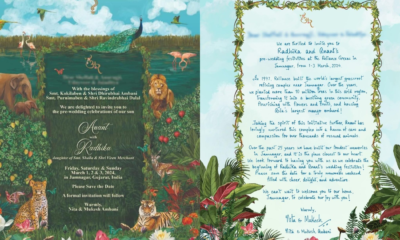
 Entertainment3 months ago
Entertainment3 months agoAll About The Dreamy Pre Wedding Invite Of Anant Ambani & Radhika Merchant
-

 Fashion3 months ago
Fashion3 months agoMajor Denim Trends You Need To Know in 2024
-

 Entertainment3 months ago
Entertainment3 months agoBest Looks from Golden Globes 2024





























